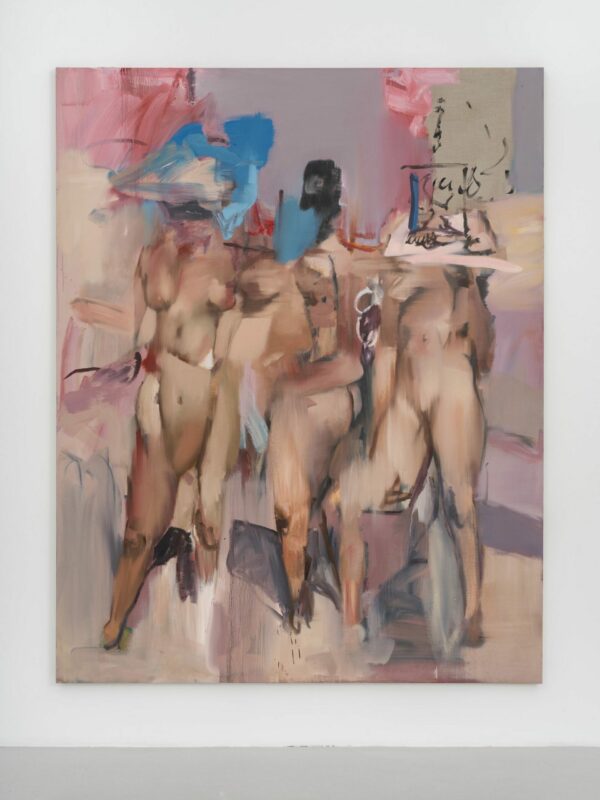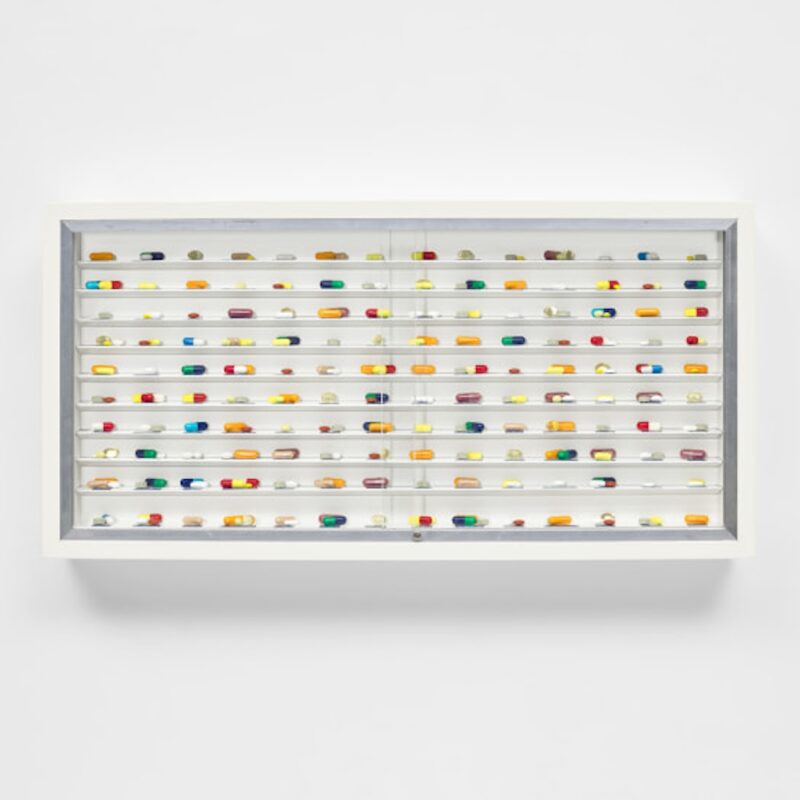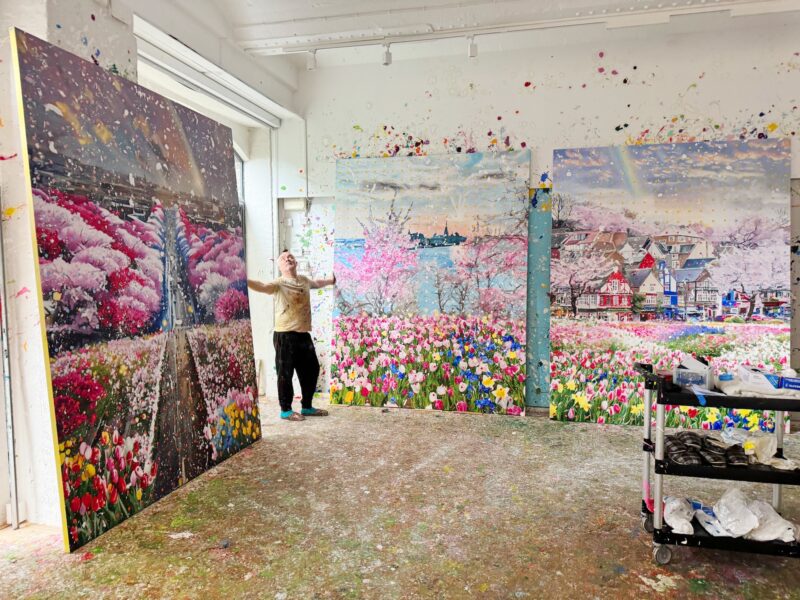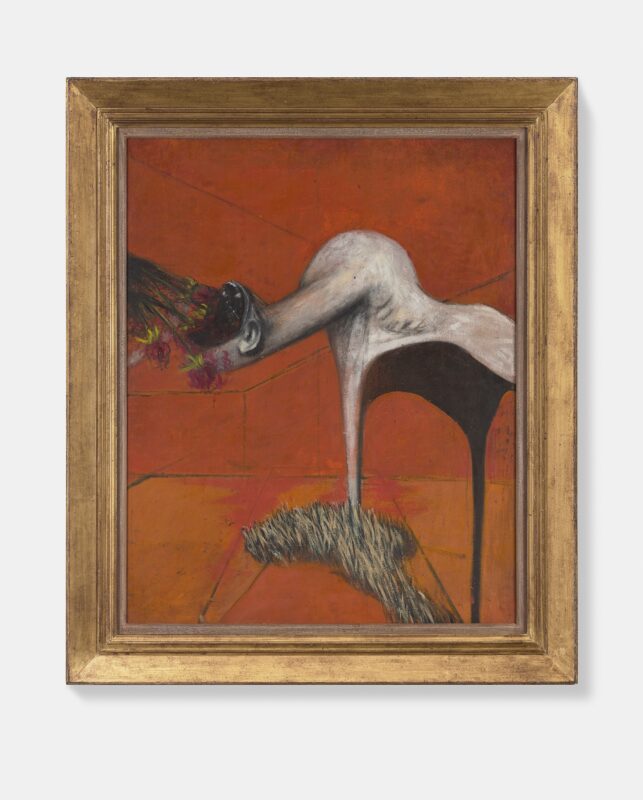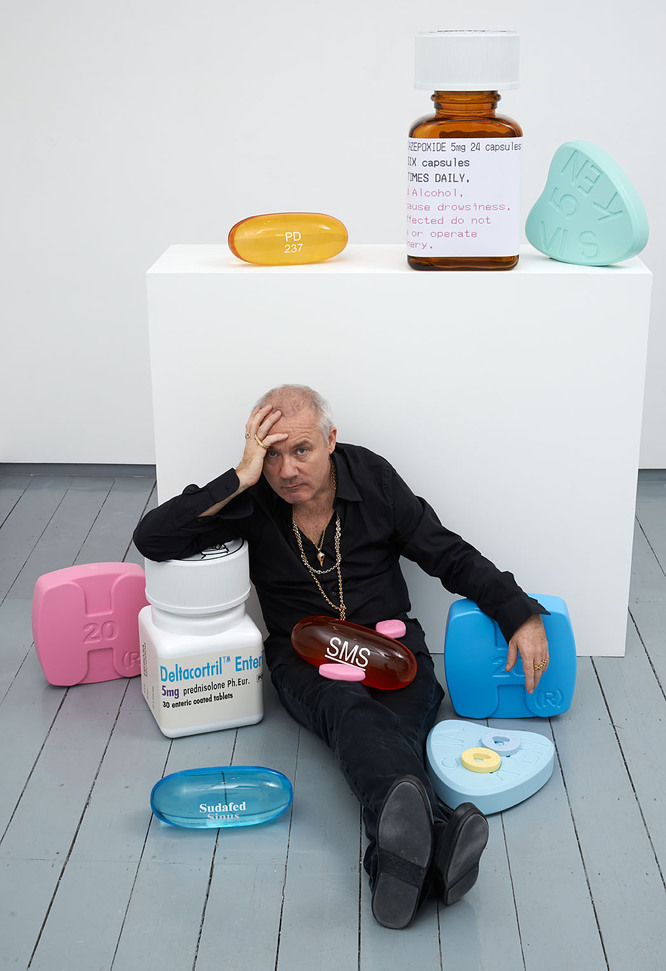
As the invitations were sent out and the press previews published, you could almost feel the collective wince: Damien is going on about death, pharmaceuticals and spirituality again, manufacturing confections for the sole benefit of the market, which have high prices and low intellectual content. But there is a lot to be said about this new body of work, when considered for precisely what it is – sculpture and print editions that are themselves peripheral to but conceptually grounded in an artist’s practice. Besides, it would not be Frieze without Damien doing something a little silly.
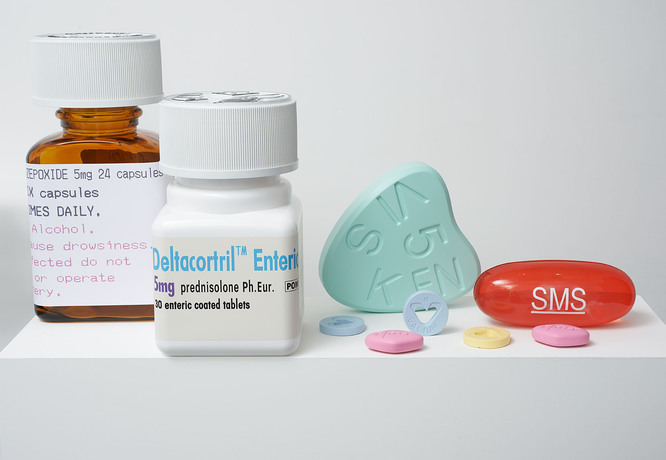
The basic principle here is Alice in Wonderland goes to the pharmacy and things get a bit out of hand. Oversized pills, pharmaceutical packaging, scalpels and syringes, with garish prints in alarmingly small editions consume the space, sometimes arranged in lines and innocuous grids and sometimes strewn haphazardly across the floor. It is as if the cold, brooding minimalism of the Medicine Cabinets has been hijacked by Willy Wonka and the stark, immaculate sublime of the Pill Cabinets has abandoned its otherworldly cleanliness. It is difficult to know whether to take it seriously; so much colour, ostentation and audacity injected into the ordinary stuff of life and an artist’s perennial obsession renders the viewer mute, in awe, perhaps, but certainly in an extraordinary state of disbelief. And that’s exactly as it should be: Hirst’s great gift is not to shock, but to depict the world with equal measure of absurdity and amazement so that it dissolves into uncertainty.
There will, of course, be those who find this exhibition an indefensible act of delusional stupidity and who therefore regard any attempt to defend it as blind idiocy, but life and art are rarely that clearcut. In a sense, these works are not in any way essential to Hirst’s practice, nor are they essential to the continuation of art or life; they are too humorous for their own good, as if they are part of a perverse fairground attraction. But therein lies the trick: Hirst has got to a point where he can get away with it, but he can get away with it because he knows it will be dismissed out of hand, so when no one takes you seriously anymore then the world is all yours and you can do what you want. This is evidenced by the fact that these works are comic exaggerations, produced for easy money, of things that are actually integral to Hirst’s practice.
The stainless steel scalpel, standing more than two metres tall, glistens in the artificial light as a monument to surgery, but sits halfway between a guardsman’s spear and an inert decoration. The bottles and boxes of medicines, which we are so accustomed to in their banal miniature form, suddenly become totems. It is easy to think that Hirst is a conceptual artist and to therefore reject him because the concepts are tired and empty, but this exhibition demonstrates that at the core is an aesthetic that aims to mount a challenge. We are familiar with diamonds and we are familiar skulls, but Hirst puts them together to create an impossible counterpoint. The aesthetic – machine made, as if all humanity had drained out of art by dint of some mysterious technology – renders strange, even obtuse, the basic operative conditions of human life. Scale, material and colour here converge on an entirely in your face gesture that questions your indelible faith an in an industry that promises life: the palpable absurdity of the works only mirrors the delicate obscenity in the idea of more life through more drugs.
It is as if Hirst, quietly self conscious, is forcing us to confront the catastrophic realisation that the pharmaceutical industry is no more life-affirming than our hopeless devotion to the art industry, which, after only, only produces this overblown bling from one moment to the next. Even if you cannot stomach any interpretation that attempts to explain these works as a legitimate part of Hirst’s practice or that tries to make it intellectually relevant to your fading existential condition, there is still something to be said. The perfection of these objects is disconcerting, as if they were forged in the furnace of the sun; their colours and immaculate surfaces shimmer before the eye; their delicate abstraction from reality places them on the edge of a realm of pure contemplation. And then you realise Damien has done his trick again: he has used aesthetics to seduce you into something you desperately wanted to resist, and the next morning you wake up feeling violated and secretly delighted.
Words: Daniel Barnes
Damien Hirst: Schizophrenogenesis is at Paul Stolper Gallery until 15th November.
